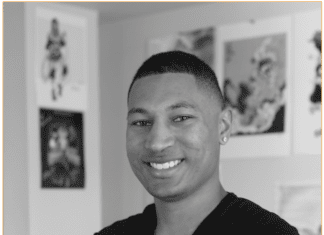Sumit Gupta is the author of The Tableau Workshop. We got the chance to sit down with him and find out more about his experience of writing with Packt.
Q: What is/are your specialist tech area(s)?
Sumit: Marketing Analytics and Data Visualization
Q: How did you become an author for Packt? Tell us about your journey. What was your motivation for writing this book?
Sumit: I have been professionally developing Tableau reports and dashboards for better part of last 6-7 years. When Packt acquisition editor Sneha Shine approached me inquiring if I will like to co-author a book on Tableau, I was all in for it. The title of the book as well as the outline gave me a sense as in how impactful the book will be for new Tableau users. Also, considering I have previously trained and mentored other analysts to get certified as well as get better in creating Tableau dashboards, this title just presented with an opportunity to reach masses in short span and concise manner!
Q: What kind of research did you do, and how long did you spend researching before beginning the book?
Sumit: I researched a lot actually. I read atleast 8-10 books on Tableau end-to-end and learnt what makes a book a great book vs a mediocre one. I think I learnt as a reader was that I a book had practical activities/exercises, I was keen to keep reading and executing those exercises. The moment a book talked a lot of theoretical aspect, my motivating to keep reading the chapters waned! That is what the authors of the title have tried to incorporate in all our chapters, including the bonus chapters which is published on Github repo.
Q: Did you face any challenges during the writing process? How did you overcome them?
Sumit: Yes, absolutely! Pandemic, writers block, identifying the right exercise with enough depth for each topic/skill was challenging. Whenever I was stuck in these situation, I would read more, talk to more analytics professionals and learn from them. I would go back to my whiteboard and start listing down all the possible solutions for the problem, challenges and eventually discuss with network and proceed to complete the chapters. It was challenging yet very rewarding process indeed!
Q: What’s your take on the technologies discussed in the book? Where do you see these technologies heading in the future?
Sumit: I may sound a bit biased here, but in my opinion, Tableau and its suite of softwares are the best Business Intelligence and Dashboarding tool out there. Tableau has consistently ranked well in Gartner’s Business Intelligence Magic Quadrant as “Leaders well as Visionaries” and there is a reason why they have been so consistent because the software just gets the job done not only for tableau developers but even for business stakeholders which is whom we develop most of our dashboards and reports for. Tableau and BI skillset in general will continue to grow in years to come. The fear of “Automated BI” is valid but so long Tableau developers can keep providing value to their business stakeholders and Tableau software keeps up with the analytics trend, Tableau and the developers will continue to grow.
Q: Why should readers choose this book over others already on the market? How would you differentiate your book from its competition?
Sumit: As I mentioned in the response above, our book is structured as a “workshop” in book form. No more boring jargons or stories about how “SQL” is pronounced (its Sequel btw), but the book delves deep into tableau as a software as well as a skillset to learn with real life practical examples, specially the activities at the end of each chapters. This book will be able to help you create a Tableau portfolio worth sharing!
Q. What are the key takeaways you want readers to come away from the book with?
Sumit: Tableau as a software is amazing. Use it as a tool to convey a story to your business stakeholders but also focus on context as well as making your dashboards as easy as it can for your business stakeholders to use. You can use Tableau to make one of the most complex dashboards or you can make a very aesthetically pleasing yet simple and impactful dashboards. That’s your call!
Q. What advice would you give to readers learning tech? Do you have any top tips?
Sumit: I consider Tableau like Adobe Photoshop. The new worksheet in tableau is like blank canvas in Photoshop. Whatever you can imagine on that canvas, you can in all probability create it. But a blank canvas can also be very daunting at first, hence this book hand holds you through the features and skills and at the end helps you build dashboards with real-life data!
Q. Do you have a blog that readers can follow?
Sumit: Oh yes! One of the best thing about Tableau is its community and the rockstars which keeps Tableau development exciting! There are tons of blogs out there but some of my favs are (in no order):
– https://www.thedataschool.co.uk/blog/
– https://www.flerlagetwins.com/
– https://www.makeovermonday.co.uk/blog/
– https://www.tessellationtech.io/articles/
– https://tableau.toanhoang.com/
And if you are looking to get Tableau certified (Shameless plug :D):
– https://towardsdatascience.com/ultimate-guide-to-getting-certified-in-tableau-5bd2df7d0c7d
Q. Can you share any blogs, websites and forums to help readers gain a holistic view of the tech they are learning?
Sumit: Some blogs which cater to general analytics as well as business intelligence community that I love are:
– https://www.storytellingwithdata.com/blog (My fav blog)
– https://flowingdata.com/
– https://www.visualisingdata.com/
Q. How would you describe your author journey with Packt? Would you recommend Packt to aspiring authors?
Sumit: Journey as an author for Packt was rewarding, albeit a bit frustrating at times because of disruption cause due to Pandemic but I am glad that the Packt team worked hard to get the title published! I will recommend Packt to authors who want to share their knowledge/expertise to larger audience!
Q. Do you belong to any tech community groups?
Sumit: I do, Tableau Community is always fun! You can also join in #MakeoverMonday community which publishes one data challenge every week and Andy and Eva, two of the Tableau zen masters (Now called Visionaries) walk through the best vizzes. I have learnt so much from them!
Q. What are your favorite tech journals? How do you keep yourself up to date on tech?
Sumit: Not really, blogs are my go to source to stay updated!
Q. How did you organize, plan, and prioritize your work and write the book?
Sumit: I created boundaries between my work and my book. Although I have shared tips and wisdoms from my experience using Tableau from my work but I liked to block my after-works to just focus on delivering the best possible chapters I could. I hope book readers appreciate the effort we co-authors have put!
Q. What is that one writing tip that you found most crucial and would like to share with aspiring authors?
Sumit: Whenever you are writing a tech book, imagine yourself as a reader of the chapters and try to identify areas/sub-sections which is confusing or need more clarity. This helped me constantly improve the activities/exercises and helped me write those chapters knowing that my readers will be able to solve all the hurdles!
Q. Would you like to share your social handles? If so, please share.
Sumit: Yeah, I am active on LinkedIn www.linkedin.com/in/sumonigupta and sometimes on Twitter www.twitter.com/sumonigupta
You can find Sumit‘s book on Amazon by following this link: Please click here.









